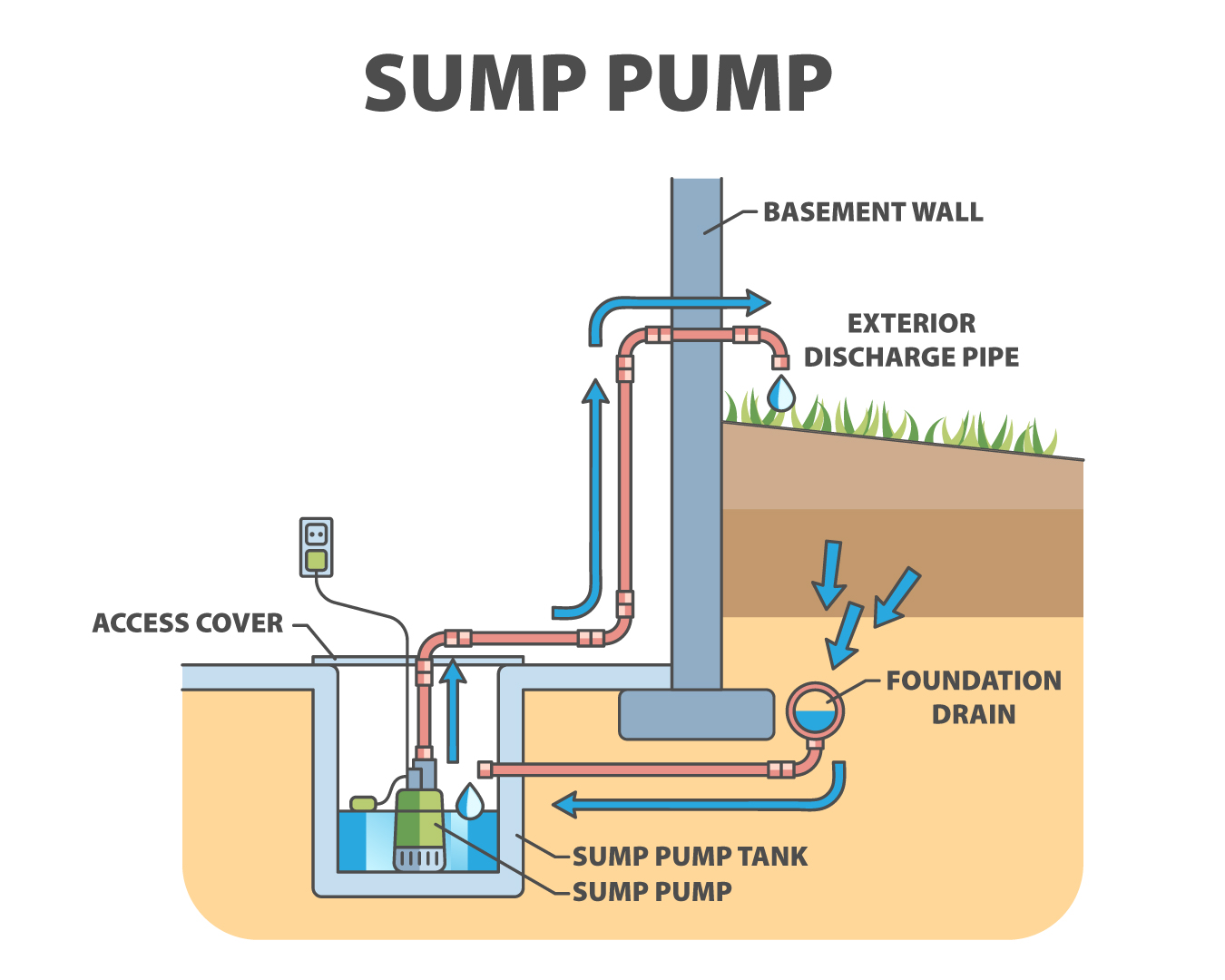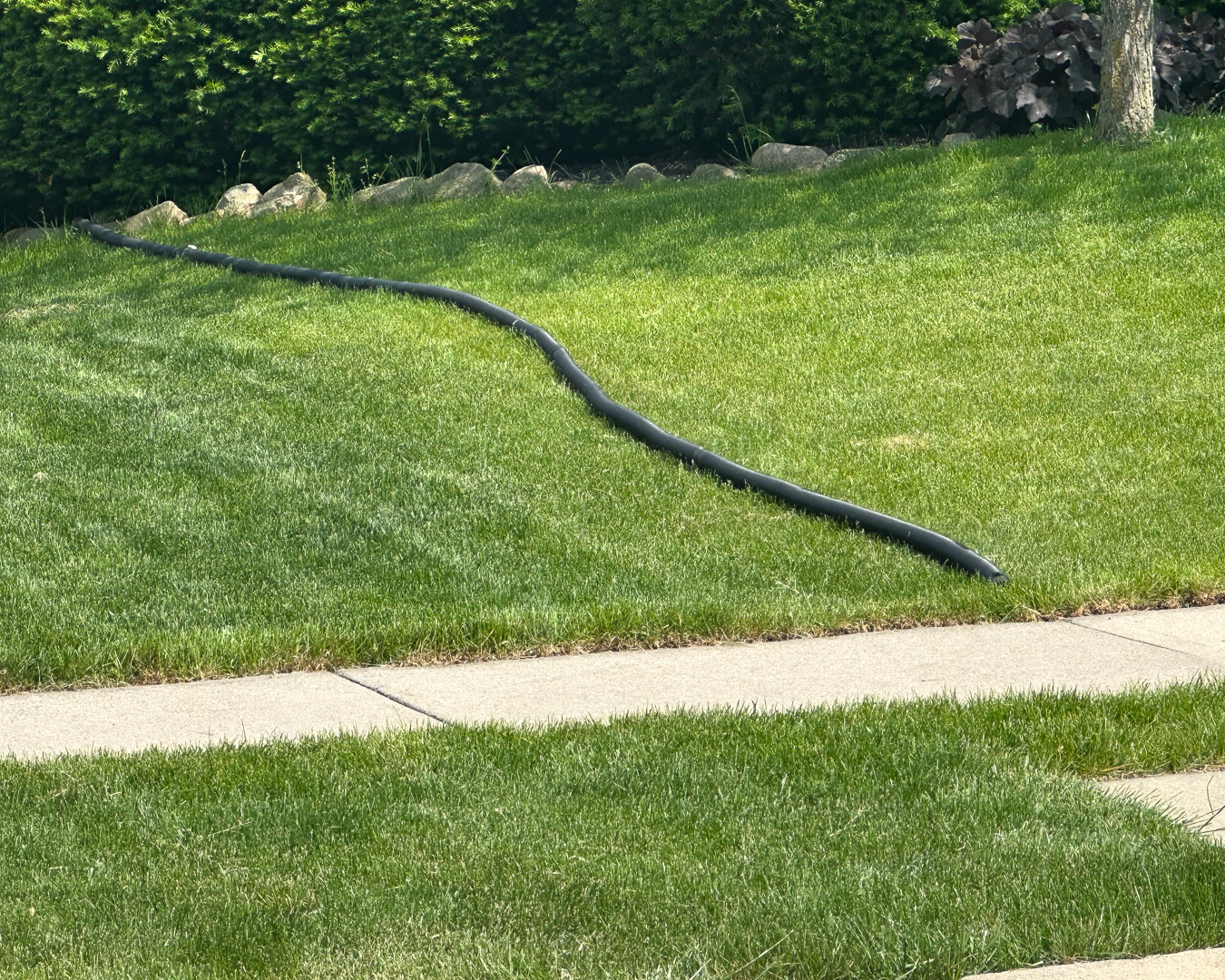By Terri Larson
It rains in Iowa, sometimes quite a lot. We’re fortunate in that way, but when it comes to your basement and home, too much of a good thing can be bad. If your home is a newer build, after 1960, the installation of tiling systems and sump pumps became a standard feature of home construction, which enabled basements to become livable lower levels, not just a storage area or storm shelter.
The tiling system is set up to collect the water as it comes from the surface and down against the foundation wall. As it filters through the ground (see Figure 1), it will hit the gravel/rock area which surrounds the tile field, and since water prefers the path of least resistance when it moves, it will travel through the rock bed into the perforated drainage tile field as this an easier path for the water than finding the hairline cracks in a foundation wall and coming into your basement. These tile fields then move the water into an intended pit constructed into the basement floor when there is a tiling system around the home’s perimeter.

Into this pit, sump pumps are installed. They can be submersible (sits deep into the pit), pedestal (stands on the bottom of the pit and extends through the pit opening in the basement floor), or a battery backup sump pump (runs off a marine battery in the event there’s an electrical outage). New construction will likely have a sump pump pit if the lot isn’t steep enough for the water to flow away from the home, but may or may not have a sump pump installed.
The point of a sump pump system is to remove the water from the foundation of the home, and redirect it away from the house. The water will exit the house typically through a PVC pipe through the home’s exterior wall (see Figure 2). A long tube is connected to this PVC pipe, and you can then direct the water either towards the street (see Figure 3) or towards the back and away from the home. Failure to install the tube to the PVC pipe will result, when the pump is running, in water getting pumped out from your pit landing against your foundation wall and cycling right back against the foundation into the drainage tile into your pit and pumped back out. Again and again and again.

Here are some helpful hints about Sump Pump do’s and don’ts:

- Install a sump pump into your pit if your yard isn’t heavily sloping away from the house.
- Install the black sump pump hose from the PVC pipe exiting your home.
- Direct the exiting water away from your home. Be a considerate neighbor, too, and don’t direct your hose directly at their home; rather, direct the water to flow away from all homes.
- THIS IS A BIG ONE: During the freezing temp months, be sure to disconnect the black sump pump hose from the PVC pipe exiting your home. If water is in the hose, it will freeze, causing the tubing to be blocked. We often have a day in January or February when it rains, even though there might be snow on the ground and the ground is frozen. When this happens, the water will again seek the path of least resistance, which will be the space between the foundation wall and the frozen ground. It’ll run directly into the tile fields and into your pit. Your sump pump will run, but the water cannot exit through the hose because it’s blocked with ice. This results in the sump pump running and water backing up out of the pit directly into your basement. If you want to be ultra prepared, you can have a second sump pump hose (the heir and the spare), connecting the spare sump pump hose and then directing the water away from the home. (Often the heir sump pump hose is buried in a snowbank.)
- Periodically, you will want to check that your sump pump is still correctly working. If possible, pour a bucket of water into your pit and see if the pump kicks on.
- Consider getting a sump pump failure/sewer back up rider on your homeowner’s insurance policy. This coverage usually isn’t standard, you have to ask to have it added. The cost is nominal to insure, but the damage caused by water in a short amount of time can be very costly. Sewer backup can be even worse.
- While folks who are ultra handy may have no problem installing a sump pump into their pit, this task provides a really good reason for many of us to hire a plumber or handyperson to come and make sure the installation is working properly. (There’s a reason why they have a job…)
Managing rainwater isn’t rocket science, but it does involve careful planning and preparedness.





